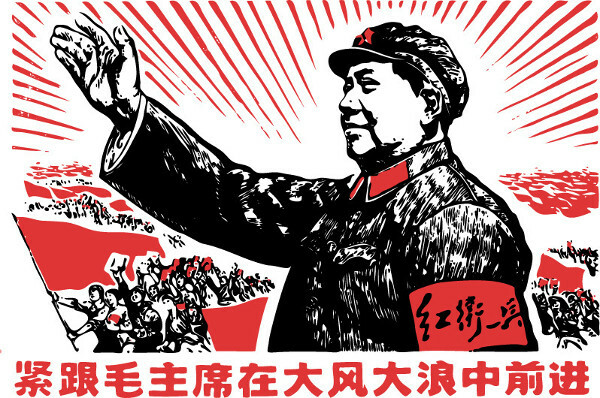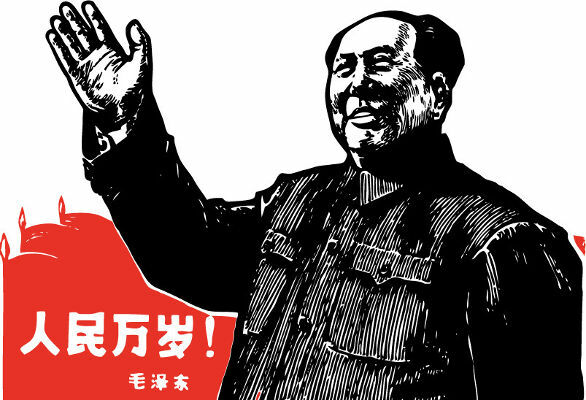THE Chinese Culture Revolution it was one political-ideological campaign promoted by Mao Tse-Tung between 1966 and 1976 in the People's Republic of China. In the Cultural Revolution, Mao mobilized the masses of the country, especially students, in the so-called Guardsred, to persecute all those who were seen as a “risk to the revolution”.
The Cultural Revolution created an intense ideological persecution in China and resulted in great violence, aimed mainly at the country's intellectuals. It is estimated that millions of people were persecuted and died during this phase, which only ended when Mao died in 1976.
Also access: Meet the life of a tyrant who was formally supported by Mao
Historical context

The Cultural Revolution was launched by Mao Tse-Tung in 1966 as a response to his critics in the Chinese Communist Party (CCP). Mao's situation in the CCP in the 1960s was one of progressive isolation. That
Mao's weakening in the party occurred mainly due to the failure of the plan Great Leap Forward.This plan consisted of encouraging industrialization through accelerated production of steel by Chinese workers. The plan, however, was a major failure and resulted in the death of millions of people from starvation, as the country's agricultural production weakened considerably and resulted in the great hunger, which caused the death of more than 20 million people.
This resulted in Mao's removal from the presidency of China, being replaced by Liu Shao-Chi, in 1959. Mao, however, remained in the presidency of the Chinese Communist Party and, in the 1960s, dedicated himself to grassroots work through education and training programs for the Chinese masses.
After Mao stepped down from the presidency, he was criticized by the new president and party members who considered his ideals inappropriate for China. Also, at that time, the Soviet Union had gone through de-Stalinization, that is, the end of Stalin's cult. These criticisms of the cult of the leader had repercussions in China and contributed to the break in relations between the USSR and China.
Also access: Find out what was the conflict that had the intense participation of Chinese troops
Do not stop now... There's more after the advertising ;)
Causes
The Chinese Cultural Revolution was Mao Zedong's attempt to regain power he had lost within the CCP since the late 1950s. To achieve this, Mao began attacking groups within the party, accusing them of adhering to conservatism and of undermining the Chinese Revolution (1949), leading the country to capitalism.
Mao Tse-Tung it aimed to remove from the positions of power in the party members who had their origins in the former Chinese bourgeoisie and who increasingly criticized the positions of the leader of the Chinese Revolution. In addition, Mao also sought to remove from party power all members who advocated China's rapprochement with the Soviet Union.
Chinese Cultural Revolution
That persecution campaign political-ideological had already been carried out by Mao at other times since he had assumed power, such as the CampaignThreeAnti and the Campaignanti-rightist, both in the 1950s. Historians consider that the Cultural Revolution began with a late 1965 critique of a play called “The Dismissal of Hai Rui”.
This criticism was carried out by Yao Wenyuan, a journalist who actively participated in the Cultural Revolution. Yao was part of a group of extreme Maoists called GangFromFour, who played a leading role during the ten years of the Cultural Revolution.
In May 1966, Mao decided to make the dispute that took place in the party's cadres public and released the Circular May 16th, a document that called on the Chinese population to join together to fight the growth of reactionary and bourgeois positions in the interior of the CCP. From then on, the Cultural Revolution became public, and the masses, especially the young people, strongly adhered to the call hand.
From then on, the Guardred, a kind of militia that followed Mao's thoughts, recorded in the so-called “BookRed”. These groups did much of the work of the Cultural Revolution and ideologically persecuted people who did not follow the principles established by Mao.
The Chinese Cultural Revolution turned against what Mao defined as the “Fourold”: old ideas, old cultures, old customs and old habits. The masses were urged to persecute anything that was contrary to Maoism. China's ancient culture was one of the big targets, as well as the intellectuals who were critical of Mao.
So, the Confucianism, a traditional Chinese philosophical system, came under attack, as well as the country's existing religions. Religious temples were invaded and destroyed, and sacred texts began to be burned. The burning was also carried out against books that were understood to symbolize Western culture.
THE persecution it was turned against the whole culture of times before the installation of the Communists in China (1949). This attack on culture also affected the country's education, an area that harbored most critics of Mao's policy. For this, the Red Guard played an essential role.
The members of the Red Guard were people who were indoctrinated to reportteachers and even their own parents if they had typical “bourgeois” or “Western” opinions. They formed a group that attacked all those who thought differently from Mao. Members of the Red Guard met in committees formed in places such as factories and schools.
The persecution against these groups seen as "bourgeois" caused millions of people were sent to "fieldsinre-education”, places of forced labor where they would be “re-educated” through physical labor. People sent to these places also took a political training course.

The re-education camps were "in villages where there was no running water, sewage system and electricity"|1|. Violence spread across the country as the Red Guards were increasingly empowered by Mao. Physical violence was also used as a tool for ideological persecution. In Beijing alone, 1800 were killed in August and September 1966 |2|.
The violence of the persecution became so great that Mao had to intervene in the situation, and on April 27, 1969, the Chinese army was mobilized to to dissolve the Red Guard. Despite this being the official end of the Cultural Revolution, historians say that it lasted until 1976 and only ended with the death of Mao Tse-Tung.
After Mao died, Deng Xiaoping – a persecuted CCP member, sent to a re-education camp and later reintegrated into the party – became China's president in 1978.
Also access: Understand the war that gave independence to several Southeast Asian nations
Consequences
The Cultural Revolution was started by Mao as a way to regain control of the CCP and end internal opponents. The campaign also sought, literally, to promote a profound cultural revolution in China with the aim of silencing opposition and smothering the country's culture.
One of the consequences of the Cultural Revolution was the undoing almost complete ofsystemeducational from basic education to – and mainly – higher education. This was a result of the intense persecution that was carried out against teachers in that country. Historian Eric Hobsbawm presents data on the crisis in the Chinese educational system:
In 1970, the total number of students in all Higher Education Institutions in China was 48,000; in the country's technical schools, 23 thousand and in the Teacher Training Schools, 15 thousand […]. In 1970, a total of 4260 young people started studying the natural social sciences […], and a total of ninety started studying the social sciences. This in a country of, at the time, 830 million people|3|.
In addition, the chaos brought about by the Cultural Revolution affected the economy from the country. The industry, for example, had a drop in its productivity. On the humanitarian issue, historians point out that millions of people have been victims of the Cultural Revolution between sessions of humiliationpublic, violencephysics, workforced etc.
O numberofficialindeaths caused by the Cultural Revolution is from 34thousandpeople, although historians point out that, probably, over a million people died as a consequence of that event. The Gang of Four, the group of extremist Maoists who coordinated much of the actions, had its members arrested and sentenced to prison for the crimes committed during this period.
Furthermore, the persecution of China's traditional culture resulted in the destruction of thousands of artifacts that were part of an important legacy of Chinese history. Books, as we mentioned, were burned by the thousands.
Currently, the Cultural Revolution is something of a taboo in China. It is a subject little studied in elementary schools and, even at higher level, there are barriers imposed on those who study the event. The CCP itself today recognizes the Cultural Revolution as a mistake that marked an extremely chaotic period in Chinese history.
Grades
|1| SANTANA, Cristiane Soares de. Notes on the History of the Chinese Cultural Revolution (1966-1976). To access, click on here.
|2| Overview of the Chinese Cultural Revolution. To access, click on here [in English].
|3| HOBSBAWN, Eric. The Age of Extremes: the brief 20th century 1914-1991. São Paulo: Companhia das Letras, 1995, p. 454.
By Daniel Neves
Graduated in History

